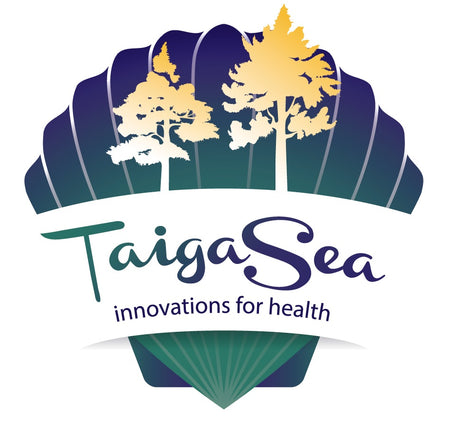Adaptogens belong to a group biological active compounds exerting toning effects on the body, stimulating activity of central nervous system, enhancing stamina, and increasing resistance against various harmful factors. Adaptogen substances are generally contained by herbs and plant but they also can be synthesized using chemical methods. The term “adaptogen” is derived from the word “adaptation”. Generally, adaptogens are the remedies enhancing human adaptive capacities.
Adaptogen effects are caused through influencing the functions of nervous, endocrine, immune and cardiovascular systems, although detailed mechanisms of these activities are not clear yet. All adaptogen herbs have very complicating contents of compounds, therefore, their mechanisms are quite diverse. Herbal adaptogens influence DNA synthesis, regulate hormone metabolism, alter brain functions, activate metabolic processes, enhance body protection systems via activation of cellular and humoral immunity.
Herbal adaptogens contain such biological active compounds as flavonoids, glycosides, polysaccharides, phytosterols (ecdisteron), terpeniods, hydroxylated fatty acids, and glycoproteins.
Synthetic adaptogens are barely used in sports because they do not make any significant influence on athletic results. That is why below the main attention is going to be given to herbal adaptogens.
Nowadays, there is a great number of herbal adaptogens and the most popular among them are the following: ginseng, eleuthero, schisandra, and rhodiola rosea. In some cases, the following natural sources are mentioned as adaptogens such as pollen, royal jelly, drill brood, ambrosia and some others, but there are no experimental and clinical evidences of their efficacy.
Herbal adaptogens were found to exert the following effects in athletes:
- Dramatic increase of physical performance, in particular, power endurance strengthening;
- Increase of fatigability threshold;
- Playing important role in liquidation of post-workout acidosis (acid pH shift in the body);
- Contribution to glycogen accumulation in muscles, liver and heart;
- Glucose phosphorylation activation resulting in improved metabolism of sugars, lipids, and proteins;
- Enhanced mental activity;
- Activation of general metabolism;
- Over-training prevention;
- Helping in mental concentration;
- Improved mood and motivation to train;
- Appetites improvement,
- Enhanced body adaptation capacity to tough ambient conditions and formation of resistance against various harmful factors (heat, cold, thirst, hunger, infections, mental and emotional stresses) with shortened period of adaptation to these factors.
- Helping antioxidant systems in prevention of toxic effects of lipid peroxidation induced by long physical exercises;
- Enhanced resistance of cells and tissues to the lack of oxygen (anti-hypoxia effects);
- Regulating effects on humoral and cellular immunity;
- Anabolic activity;
- Blood microcirculation improvement.
It should be also noted that herbal adaptogens almost do not alter normal body functions.
There are several herbal adaptogens commonly used in sports which activity was scientifically confirmed. Oral intake of ginseng or eleutherococcus extracts by secretary women was proved to reduce the number of mistakes when typing. Herbal adaptogens were also studied in clinical trials with athletes. The results of several bicyclists taking eleutherococcus extract for 12 days were significantly higher than those of a control group.
The following adaptogen are recognized the most potent for sports: ginseng, eleutherococcus, rhodiola rosea, leuzea (or Maral root), and aralia. These adaptogens have a mass of scientific evidences. Up-to-date, there are more than thousand studies done confirming that these herbs are effective indeed.
Adaptogens can be taken by athletes because they are not designated to doping substances. Their effects can be noted within several hours after the first intake. Almost all adaptogens should be taken before afternoon because they activate mental activity and prevent sleepiness. Such adaptogens like Rhodiola exert opposite effects helping to calm emotional activities and relief of stress, so it is good to take it at the end of day.
Generally, adaptogens are not recommended for a permanent consumption and should be taken in courses 1.5-2 months long each because the body systems can adapt to their influence and their effects may disappear. The highest efficiency may be reached through taking two adaptogens at the same time.
Apart from similar properties, each adaptogen herb has its own peculiarities and their influence on the body may vary a lot. That is why combining and alternation of different adaptogen remedies is recommended taking to account all their specific effects.
For example, aralia significantly increases cell membrane permeability to glucose. Glucose oxidation inside cells also becomes faster.
Leuzea possesses very high metabolic activity whereas other adaptogens do not exert such effect.
Specific property of schisandra is its capacity to increase excitation processes in brain.
Rhodiola rosea has specific influence on muscle tissues and heart muscle as well as exert stress relieving effects.
Eleutherococcus is successfully used for increased energy output during competitions.
Effects of almost all adaptogens are prone to accumulation, so their use is more effective when it goes for 30-45 days. Herbal adaptogens have no adverse effects and considered non-toxic even when taken in large doses. Some small side signs are not dangerous such as insomnia, allergy, individual intolerance, and increased myometrium tone. All listed side effects are reversible and quickly disappear after the use of adaptogens is discontinued.
